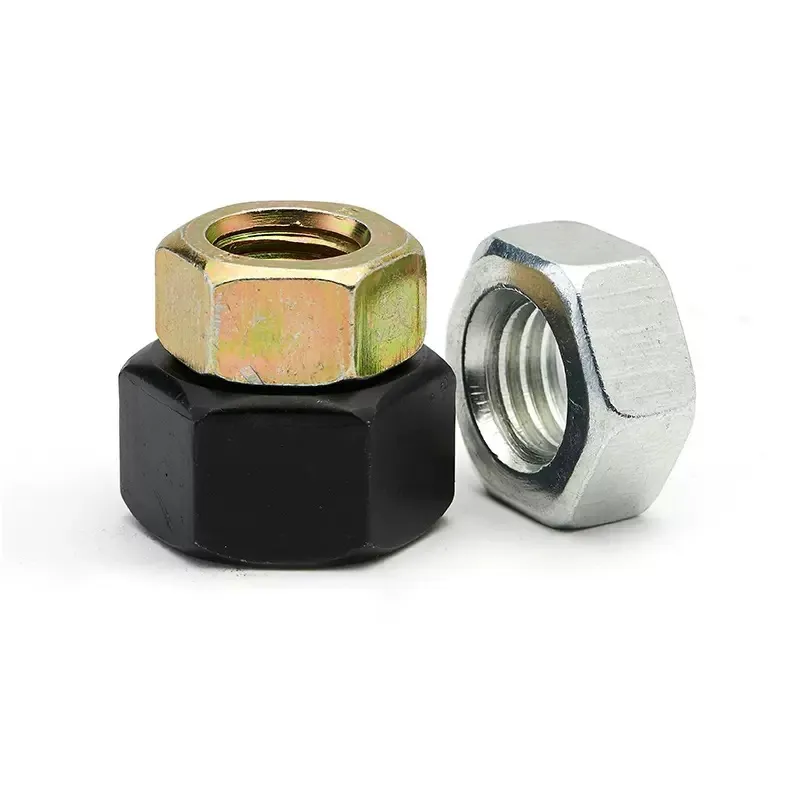

self drilling screws structural steel
Nov . 04, 2024 01:23 Back to list
self drilling screws structural steel
Self-Drilling Screws in Structural Steel Applications
Self-drilling screws have become an essential component in the construction and assembly of structural steel structures
. These innovative fasteners simplify the process of joining metal components, offering a range of advantages that make them a preferred choice among engineers and construction professionals.One of the primary benefits of self-drilling screws is their ability to eliminate the need for pre-drilling holes. Unlike traditional screws that require pilot holes to be drilled beforehand, self-drilling screws come equipped with a drill bit tip that allows them to create their own hole as they are being installed. This feature not only saves time during the installation process but also reduces labor costs, making the overall construction task more efficient.
The application of self-drilling screws in structural steel is vast. They are commonly used in steel framing, roofing, and siding applications, where quick and reliable fastening is crucial. For instance, in metal building construction, these screws can rapidly attach panels to a steel framework, significantly speeding up the project timeline. Moreover, their versatility allows them to be used in various steel thicknesses and types, from light gauge steel to heavier structural elements.
In addition to their installation speed, self-drilling screws offer exceptional strength and load-bearing capacity. Made from high-strength materials, such as hardened steel with corrosion-resistant coatings, these screws are designed to withstand the demands of structural applications. Their ability to create a tight and secure connection is critical in maintaining the integrity and safety of a structure, particularly in environments subject to high winds or seismic activity.
self drilling screws structural steel

Another important aspect of self-drilling screws is their adaptability to various coatings and finishes. Many manufacturers provide screws with different surface treatments to enhance corrosion resistance, ensuring longevity in challenging environments. This is particularly relevant in industries such as construction and manufacturing, where exposure to moisture, chemicals, and other harsh conditions is common.
Furthermore, the design of self-drilling screws includes features that enhance their performance, such as thread design and point geometry. The unique thread formation allows for efficient engagement with the base materials, providing superior clamping force. The pointed tip reduces the risk of material splitting, which is essential when working with thinner structural steel components.
Despite their numerous advantages, it is imperative to use self-drilling screws designed specifically for structural applications. This ensures compliance with safety standards and performance expectations. Proper selection based on load requirements, environmental conditions, and material compatibility is crucial to achieving optimal results.
In conclusion, self-drilling screws are integral to modern structural steel construction. Their ease of use, strength, and adaptability make them indispensable for efficiently fastening metal components. As construction techniques continue to evolve, the role of self-drilling screws will likely expand, paving the way for innovations that further enhance the speed and safety of building practices. Embracing these fasteners not only contributes to efficient project execution but also ensures robustness and durability in the final structures.
Latest news
-
High-Strength Hot Dip Galvanized Bolts - Hebei Longze | Corrosion Resistance, Customization
NewsJul.30,2025
-
Hot Dip Galvanized Bolts-Hebei Longze|Corrosion Resistance&High Strength
NewsJul.30,2025
-
High-Strength Hot-Dip Galvanized Bolts-Hebei Longze|Corrosion Resistance&High Strength
NewsJul.30,2025
-
Hot Dip Galvanized Bolts-Hebei Longze|Corrosion Resistance&High Strength
NewsJul.30,2025
-
Hot Dip Galvanized Bolts - Hebei Longze | Corrosion Resistance, High Strength
NewsJul.30,2025
-
High-Strength Hot Dip Galvanized Bolts-Hebei Longze|Corrosion Resistance, Grade 8.8
NewsJul.30,2025

